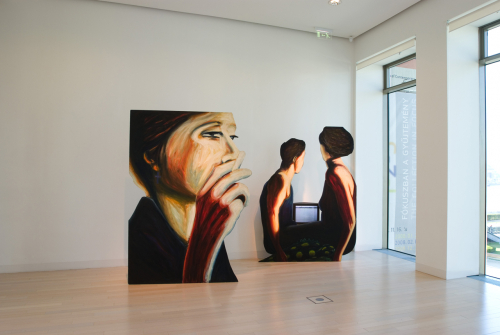Tibor Hajas’ collaboration after 1976 with photographer János Vető, who was practically the only one to document his performances, marked a new period in his oeuvre. According to Tibor Hajas, film is a direct medium that compels the viewer to accept it as reality, even though it is actually “an opportunity for imagination to found its own state.” Therefore, in his films, Hajas distances the environment and stylizes the image. He examines the potential actions of a person left alone in a sterile setting (here, a demon locked in a white room) through fuzzy and allegorical images. Beyond the expressive enhancement of the topic, he further emphasizes the fictive character of the medium by featuring a narrator. The video was made as an independent production, using Tamás Papp’s Akai video camera. The recording was preserved by Sándor Murányi. Gábor Talási at the C3 Foundation created its current—fairly viewable—version through digitizing the original, heavily deteriorated tape. The film’s original title was The Jewels of Darkness. It tells the story of a burglary in three episodes: preparation, the burglary itself, and jail. Hajas believes that “the democratic nature of video is a mere phantasm. There is only a single message, a single piece of news.” (The Beauty of Cathode Radiation, 1977)
D.K.



